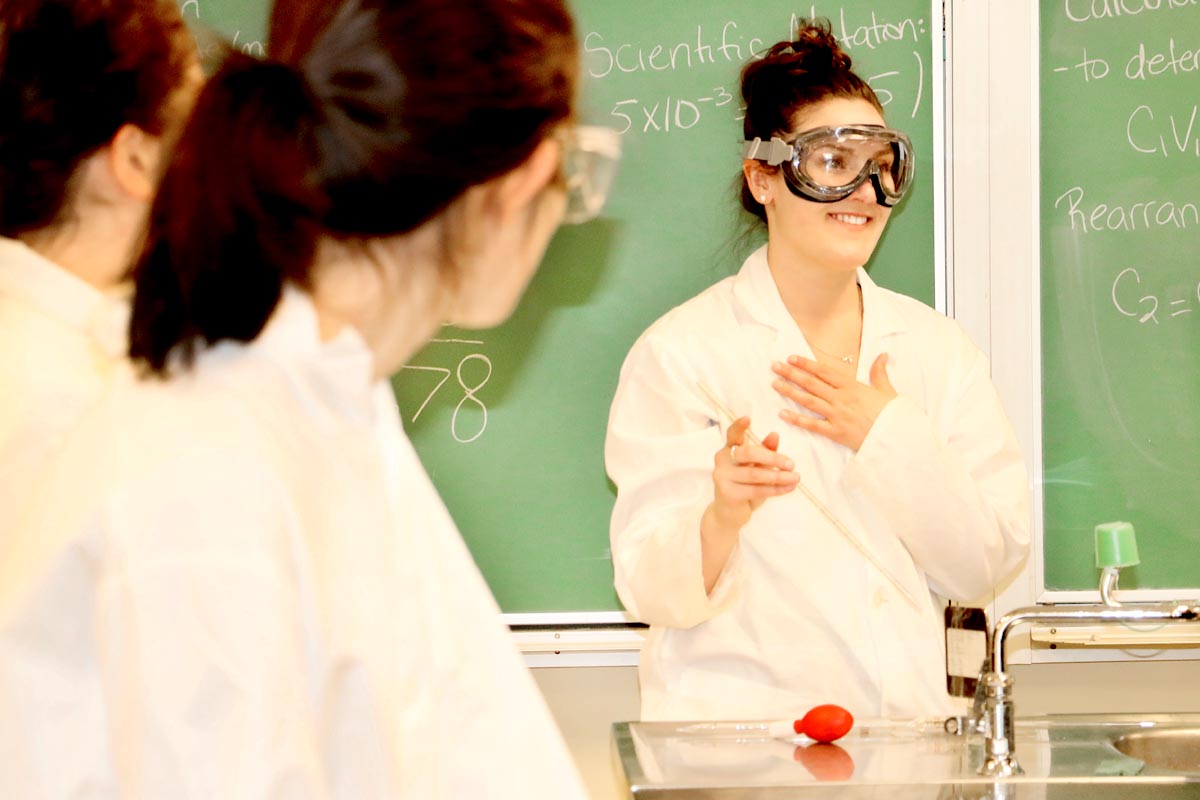Six newly-minted TRU science grads have the rest of June to savour their accomplishment before diving into what will be one of the most intense and educational 12 months of their lives.
Accepted into TRU’s new Bachelor of Education (Secondary) STEM degree, the six are part of the first cohort of 24 students who will learn to teach science and math in ways that bring the subjects to life. And in a large part, they’ll be using examples from technology and engineering to do it. The full-time, intensive, year-long program is worth 64 credits and starts July 3. The curriculum will include foundation courses in education, methods courses, practica, guest lectures from working professionals and worksite field trips. In the third week of July, they will assist in a five-day science camp for invited students going into Grade 8.
Cailey Watters and Kirsten Hales are among these six grads. They are thrilled to be facing this new challenge. People oriented and outgoing, both confessed to being science nerds with an enthusiasm for all things science right from their elementary school days. They feel they were born to teach.
“When you’re in high school or elementary school, you’re dealing with so many things on the side. Being secure with who you are as a person comes a lot from your teachers and the kind of environment they create and how they support you,” said Watters, who during her undergrad was a teacher’s assistant and worked for EUReKA!, TRU’s summer science camp for kids.
“I feel that I’ll be able to create an environment where people will be comfortable and be able to excel. Sciences can seem so difficult, but it doesn’t have to be. You just have to be supported, wiling to try your best and go from there.”
What is STEM?
STEM stands for science, technology, engineering and math. Increasingly, it has become a priority for schools and governments as they try to keep up with an ever-changing world that requires STEM knowledge and skills.
Said Hales, “If you’re passionate about science and want to teach it to other people, STEM is a great way to do that, especially at the high school level because from high school, students go on to so many other things. If you give them a good basis with critical-thinking skills, they can go on to so many things. There are a lot of misconceptions about science and I think it’s good to tell the general public how cool science is and how important it is.”

Cailey Watters interacts with high school students during their visit to TRU in April. Watters is among the Bachelor of Education (secondary) STEM degree’s first cohort.
The program received 40 applications, a solid response for the first year. Education faculty member Carol Rees, who is the co-ordinator of the program, said much of the interest is due the program’s design.
The first class is a good mix of ages, background and experience levels, which should provide opportunities for everyone to learn from each other, Rees said.
With large portions of the world shifting toward inclusion of different people and ways of thinking, so too will the STEM degree embrace multiple ways to tackle problems.
As someone with her bachelor degree and PhD in science, Rees is eager to see how the program shapes its students and how they in turn shape their students and the world.
“In engineering, maybe we’ll invent all kinds of machines we never even thought of because people are thinking of things in a completely different way. Maybe we’ll solve problems in a totally new way because people are coming into STEM professions whose mindset and voice weren’t there before. I think we can make a more diverse world and we can solve problems in more diverse ways, and that can only be a good thing.”

